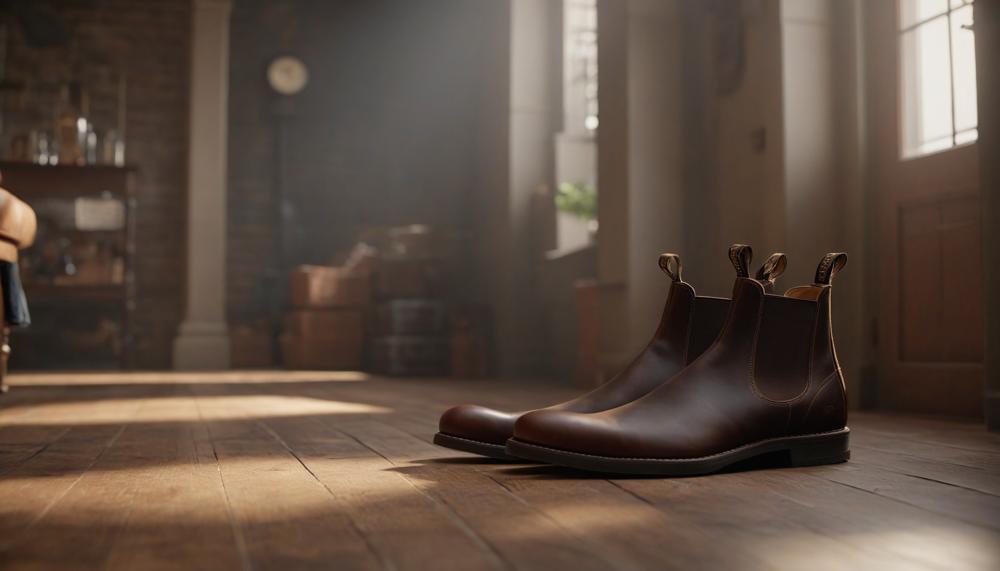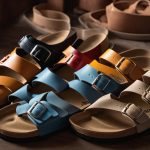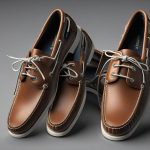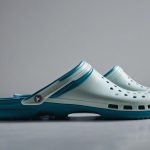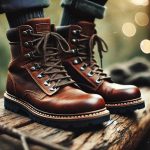No, Blundstones are not ideal for serious hiking. While these iconic boots are renowned for their durability and style, they fall short in key areas crucial for hiking. Here are the main reasons why:
- Limited Ankle Support: Blundstones were originally designed as work boots, which means they lack the necessary ankle support for hiking on steep, uneven terrain.
- Insufficient Traction: The soles of Blundstones are not optimized for the rugged, rocky paths often encountered on hikes, making them less reliable for maintaining grip.
- Breathability Concerns: With limited breathability, Blundstones can lead to sweaty feet during long hikes, reducing overall comfort and potentially causing blisters.
- Winter Hiking Limitations: These boots are not insulated, making them unsuitable for cold weather hikes where warmth and traction on icy ground are essential.
Despite their water-resistant and durable nature, Blundstones are best reserved for casual outdoor activities rather than strenuous hiking. For those seeking optimal performance and comfort on the trails, investing in purpose-made hiking boots with enhanced ankle support, traction, and breathability is the recommended choice.
What Are Blundstone Boots?
Contents
Blundstone boots, iconic for their elastic side panels and pull-tabs, are renowned for blending utility with a sleek design. Originating from Tasmania, Australia, these boots are crafted to withstand diverse environments, making them a favored choice for both casual wear and outdoor activities.
What sets Blundstone boots apart from other hiking boots on the market?
Blundstone boots distinguish themselves in the hiking boots market through their unique blend of durability, comfort, and versatility. While not all models are suited for extreme hiking, they do offer features that are beneficial for lighter and moderate trails.
Here are key features that set Blundstone boots apart:
| Feature | Benefit | Comparison |
| Rugged Construction | Ensures longevity and durability in various conditions. | More durable than many fashion-forward hiking boots. |
| Comfortable Fit | Supportive insoles and ergonomic design provide comfort during long wear. | Superior to many stiffer, less flexible hiking boots. |
| Versatility | Suitable for both urban and outdoor settings. | More adaptable than specialized, high-ankle hiking boots. |
Blundstone’s approach to a universal boot that fits various lifestyles and activities without focusing solely on the technical aspects of traditional hiking boots such as ankle support or specialized traction for rugged terrains makes them unique.
They strike a balance, offering sufficient features for light to moderate hikes and daily wear, which is why they have garnered a loyal following among those who value both style and functionality.
Can You Hike in Blundstones?
Yes, you can hike in Blundstones, but with certain limitations. While these boots are celebrated for their durability, comfort, and versatility, it’s crucial to note that they are not designed as specialized hiking footwear. Blundstones are best suited for less demanding, short hikes and are more apt for warm-weather conditions due to their lighter construction and non-technical nature.
Why Blundstones Can Be Suitable for Hiking:
- Durability: Crafted to endure tough conditions, making them viable for light trails.
- Comfort: Known for their snug fit which can reduce fatigue on shorter hikes.
- Versatility: Easily transition from urban wear to casual outdoor activities.
Limitations:
- Not for Technical Terrain: They lack the specialized features such as aggressive tread patterns and ankle support that are typical in hiking boots.
- Weather Limitations: Not the best choice for wet or extremely cold conditions as they do not offer the same waterproofing or insulation as traditional hiking boots.
For those who favor a relaxed trail walk or a short day hike, Blundstones can serve well, ensuring comfort without the need for heavy-duty hiking gear. However, for more rugged adventures, it’s advisable to opt for boots designed specifically for hiking. Here’s a detailed comparison to guide your choice:
| Feature | Blundstones | Specialized Hiking Boots |
| Design Purpose | Casual, versatile wear | Technical, outdoor performance |
| Suitability for Terrain | Urban, light trails | Rugged, uneven terrain |
| Weather Suitability | Primarily dry, mild climates | All conditions, including wet and cold |
| Ankle Support | Moderate | High |
| Waterproofing | Basic | Advanced |
Are Blundstone Shoes Comfortable?
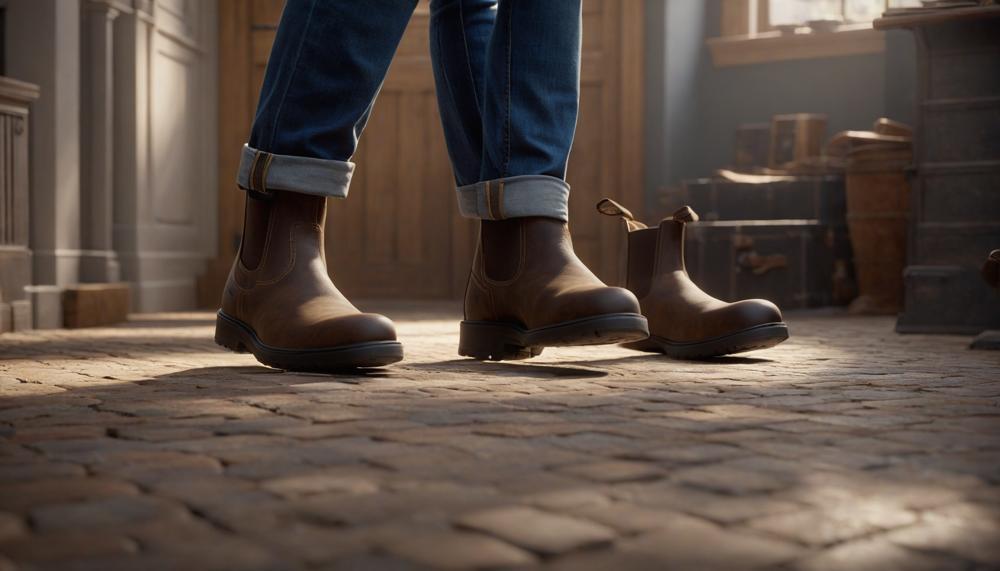
Yes, Blundstone shoes are celebrated for their comfort, making them a favorable choice for casual hiking and everyday wear. The comfort of Blundstone shoes stems from several design features that align well with the needs of light hiking and prolonged standing or walking.
Key Comfort Features of Blundstone Shoes:
| Feature | Description | Impact on Comfort |
| Comfortable Insoles | Soft, padded insoles that mold to the foot’s shape. | Reduces foot strain and enhances comfort during long walks. |
| Shock-Absorbing Linings | Materials that absorb impact and distribute pressure evenly. | Minimizes foot fatigue and discomfort, particularly beneficial for rocky or uneven surfaces. |
| Rugged TPU Outsole | Durable thermoplastic polyurethane outsole with grip. | Provides stability and traction on varied terrains, though not suited for very challenging hikes. |
Blundstone’s sturdy construction and snug fit, combined with shock-absorbing features and supportive soles, offer a solid base for hikers looking for reliability on less technical trails. While they lack certain specialized features like built-in arch support and ventilation, which are critical for more strenuous hikes, their general design makes them apt for casual use on gentle trails.
For those considering Blundstone shoes for hiking, they offer a good balance of comfort and practicality, suitable for activities that do not demand technical footwear. Their versatility also means they transition smoothly from trail to town, making them a practical footwear choice for those who value both functionality and style.
Advantages of Using Blundstones for Hiking
| Feature | Description | Benefit |
| Premium Leather Uppers | Made with high-quality leather that ensures durability and weather resistance. | Protects feet from elements and enhances longevity of the boots. |
| Cushioned Footbeds | Soft footbeds provide comfort and support during long hikes. | Reduces fatigue and absorbs impact, enhancing overall hiking experience. |
| TPU Outsole | Rugged outsole with good traction on various terrains. | Improves stability and grip, especially on uneven surfaces. |
| Arch-Comforting Insoles | Supportive insoles designed to provide arch support and comfort. | Reduces strain on feet and enhances walking efficiency. |
| Shock-Absorbing Linings | Lined interiors that absorb shocks and vibrations from walking. | Minimizes discomfort and fatigue, allowing for longer hikes. |
| Elastic Side Paneling | Allows for easy on and off. | Convenient for quick adjustments and breaks during hikes. |
Blundstones are favoured for hiking due to their blend of durability and comfort features. The premium leather uppers offer weather resistance, protecting against elements and ensuring prolonged use. Cushioned footbeds and shock-absorbing linings diminish fatigue and enhance endurance on longer trails.
The rugged TPU outsole provides stability and traction on diverse terrains, improving overall grip and confidence during hikes. Arch-comforting insoles support feet, reducing strain and promoting efficient movement. Elastic side paneling facilitates easy donning and doffing, ideal for quick adjustments during breaks.
Disadvantages of Using Blundstones for Hiking
| Feature | Limitation | Impact on Hiking |
| Lack of Laces | Reduced foot security and precision fit. | Can lead to slips or missteps on uneven terrain. |
| Poor Ventilation | Leads to sweaty feet, increasing discomfort. | Risks of blisters and foot irritation, especially on longer treks. |
| Soles and Arch Support | Limited arch support; not designed for heavy loads. | Potential for foot fatigue and discomfort during extended hikes. |
| Leather Uppers | Stiff and require a significant break-in period. | May cause discomfort and restrict natural foot movements. |
| Terrain Suitability | Not designed for rugged or varied terrains. | Increased risk of foot injuries and less effective grip. |
The advantages of Blundstones as durable and versatile boots are well known, yet they harbor significant drawbacks when repurposed for hiking. These boots, traditionally suited for urban environments or non-strenuous activities, offer limited functionality in rigorous trail conditions. The absence of laces compromises the secure fit necessary for navigating challenging terrains, leading to potential slippage and reduced stability. This characteristic alone could deter avid hikers.
Moreover, the poor ventilation of Blundstones can cause excessive sweating, which not only leads to discomfort but also increases the risk of developing blisters, particularly detrimental on long hikes. While their soles provide commendable grip, the lack of sufficient arch support makes them unsuitable for carrying heavier backpacks or for prolonged periods of walking, which are often inevitable in hiking scenarios.
Additionally, the stiff leather uppers, while excellent for durability, necessitate a lengthy break-in period that does not align with the immediate flexibility required by most hiking footwear. This rigidity can restrict the foot’s natural movements, resulting in discomfort and even injuries when faced with rugged or variable elevations.
These limitations underline why Blundstones, despite their robust build, may not be the ideal choice for hiking enthusiasts looking for footwear that supports extensive and dynamic outdoor activities.
Do We Recommend Blundstones for Hiking?
Blundstones are a popular choice for casual wear and light hiking, but they’re not the best option for serious hiking adventures. Here’s a detailed breakdown of their suitability for hiking:
| Aspect | Details | Considerations |
| Design | Blundstones feature a sturdy, lace-less design that is stylish and easy to wear. The Chelsea boot style makes them convenient for quick outings. | While stylish, the lack of laces can compromise the fit and stability required for rigorous hiking. |
| Comfort | The leather uppers and cushioned soles provide a good level of comfort for short walks and everyday use. | For longer hikes, the stiff leather can cause discomfort, and the cushioning may not be sufficient for extended wear on rough terrain. |
| Support | Blundstones offer moderate support and can be improved with additional insoles or arch supports. | They lack the specialized support found in dedicated hiking boots, making them less suitable for uneven or rocky trails. |
| Durability | Known for their durability, Blundstones can withstand a lot of wear and tear, making them a good investment for casual use. | Durability does not necessarily equate to suitability for hiking, as the soles may not grip well on all surfaces. |
| Weather Resistance | Blundstones are water-resistant, which is beneficial for hiking in light rain or wet conditions. | Poor ventilation can lead to sweaty feet, which can cause discomfort and blisters over time. |
Suitability for Hiking
Blundstones are well-suited for easy, short hikes on flat, stable trails and in urban environments. They are not recommended for:
- Challenging terrain
- Steep inclines
- Rocky or rooted paths
- Extended hikes
Features That Make Blundstones Suitable for Light Hiking
- Comfortable Fit: Cushioned soles and roomy toe box.
- Stylish Design: Versatile and fashionable, suitable for both trails and casual settings.
- Durability: Tough leather construction that withstands wear.
Limitations for Serious Hiking
- Lack of Laces: Reduces stability and precise fit.
- Limited Support: Insufficient for rough terrain.
- Poor Ventilation: Can lead to overheating and discomfort.
For serious hiking, it’s advisable to invest in specialized hiking boots designed with the necessary support, traction, and comfort.
Conclusion
While Blundstones epitomize rugged charm and enduring construction, they aren’t the go-to choice for the serious hiker.
Crafted originally for work environments, these boots lack the critical features essential for tackling challenging trails. The absence of adequate ankle support leaves hikers vulnerable on uneven terrains, while the sole’s limited grip can falter on the slippery or steep paths typical in hiking scenarios.
Moreover, the boots’ modest breathability could lead to discomfort during extended treks, making them less than ideal for prolonged engagements with nature’s more demanding aspects. Though Blundstones are water-resistant and boast impressive durability, their design falls short in cold weather conditions, lacking the necessary insulation for frosty adventures.
These boots offer superior ankle support, robust traction, and enhanced breathability—qualities tailor-made for the great outdoors.

